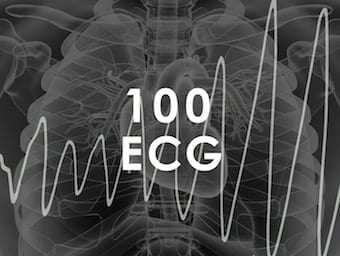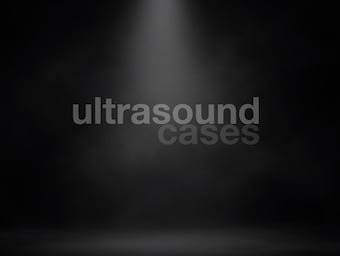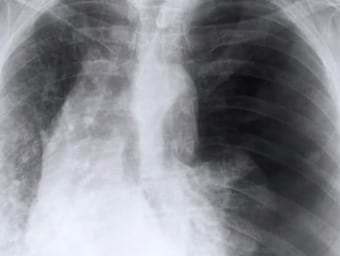
ECG Case 101
51 yr old female who presented with chronic vomiting. She has a history of rheumatoid arthritis and paroxysmal atrial fibrillation. Her medications include sotalol and rivaroxaban.

51 yr old female who presented with chronic vomiting. She has a history of rheumatoid arthritis and paroxysmal atrial fibrillation. Her medications include sotalol and rivaroxaban.

A 35 year old man presents with a swollen and uncomfortable right arm. He states his arm feels heavy and weak. You perform a vascular ultrasound

31 yr old female who is 5 days post-partum she was brought to the Emergency Department following a episode of collapse. Describe and interpret this ECG. LITFL Top 100 ECG

Funtabulously Frivolous Friday Five 210 - Just when you thought your brain could unwind on a Friday, some medical trivia FFFF.

There is something strange about this chest x-ray of a neonate who has just arrived in ICU from the OR. What is the oddity and what are the implications?

Funtabulously Frivolous Friday Five 209 - Just when you thought your brain could unwind on a Friday, some medical trivia FFFF.

A Twitter response to anonymous anti-SMACC sentiment pervading the Twittiverse by David Hartin

ECG from a 19 yr old referred by their GP for investigation of palpitations found at a routine medical review. The patient is asymptomatic with no past medical history or regular medications. Describe and interpret this ECG

McMurray test is used to evaluate individuals for tears in the meniscus of the knee. First described 1928 by Thomas Porter McMurray (1887-1949)

The spontaneous tension pneumothorax...does it really exist?

The malaria disease is caused by a Plasmodium protozoal parasite, post proboscis penetration by an infected Anopheles mosquito. Here we discuss Malaria vaccine

Funtabulously Frivolous Friday Five 208 - Just when you thought your brain could unwind on a Friday, some medical trivia FFFF.